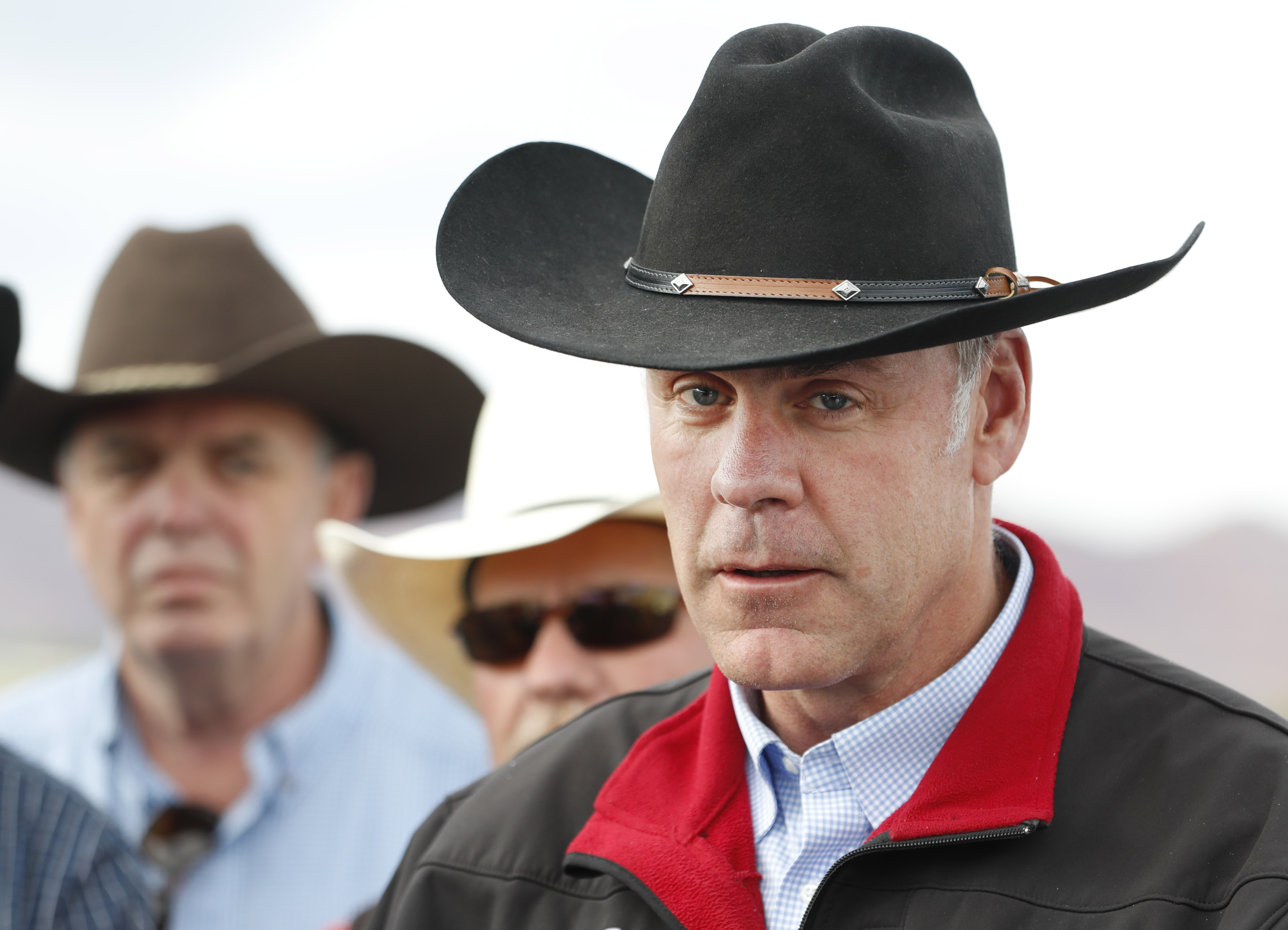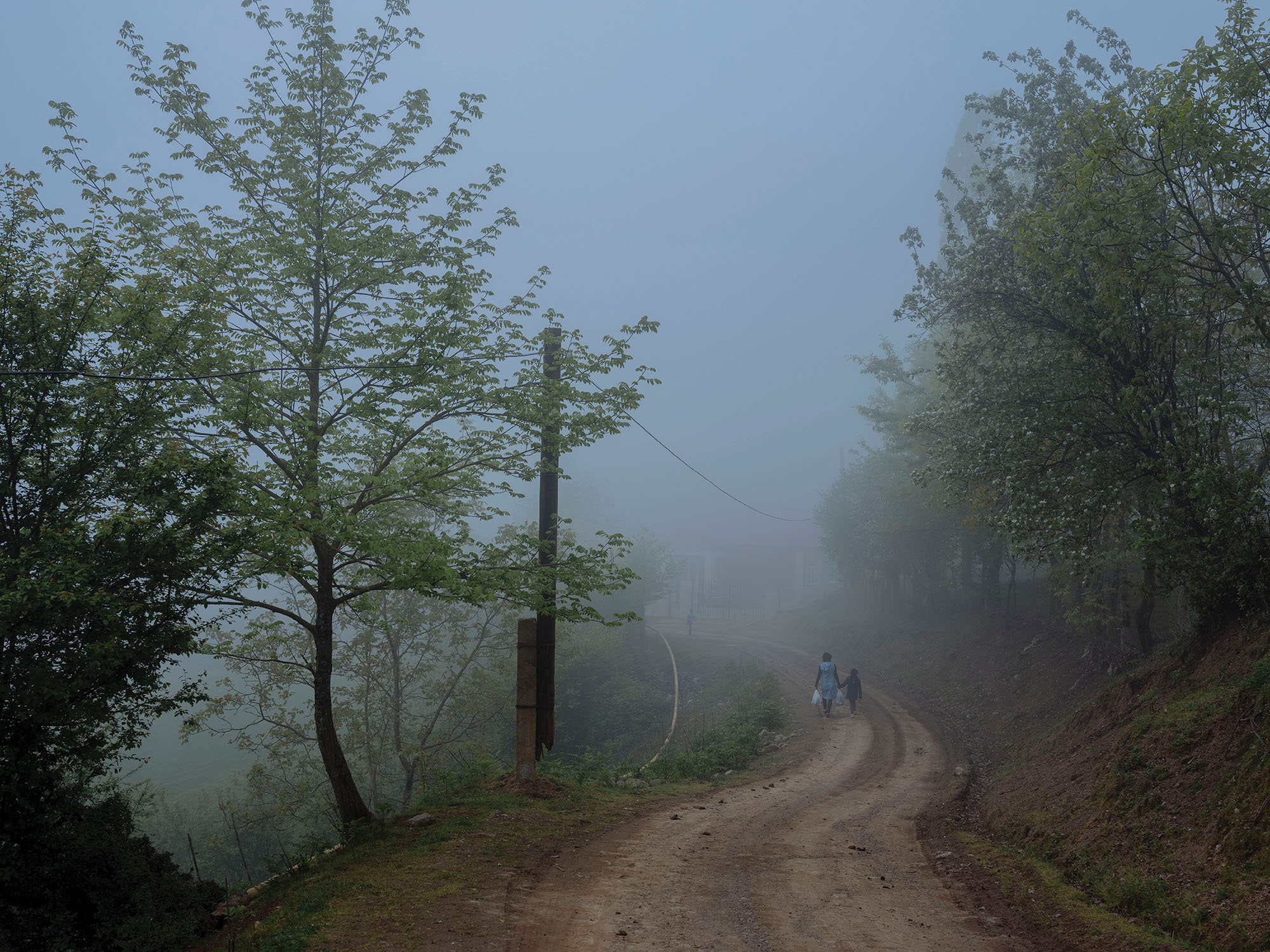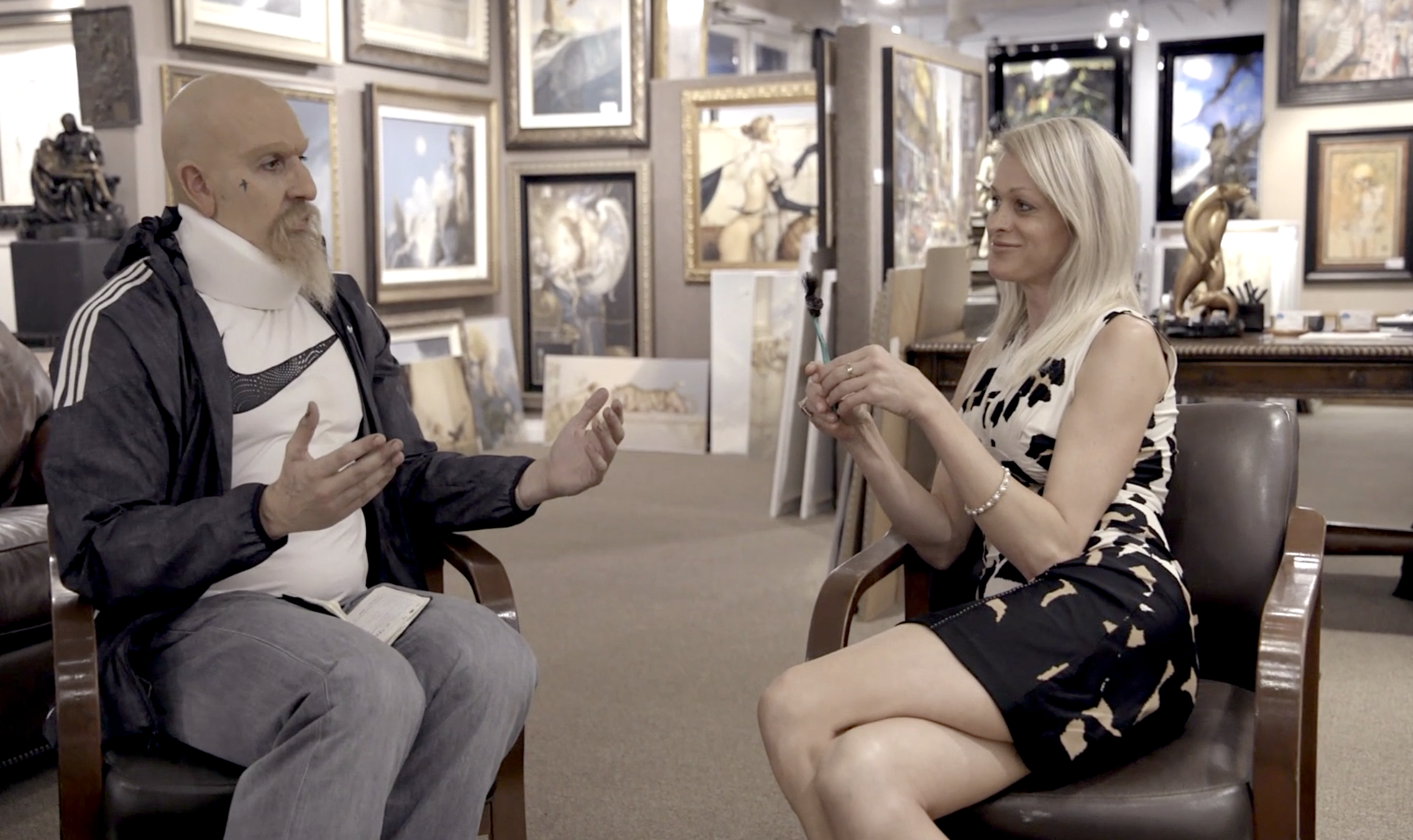A weekly newsletter for Pacific Standard Premium members.

(Photo: George Frey/Getty Images)
Your Five Essential Reads
A rundown of five of our most important and timely stories from the past week.
- “Those who posit themselves as most civil are often the people with the most power and privilege, and they’re also often the most forgetful of the history of this continent, which was founded in blood.” In her first essay as a contributing writer for PSmag.com, Terese Marie Mailhot argues against the invocation of civility as a means of quieting civil discontent by pointing to how the word has historically been used to cloak barbaric policy against minority populations in a sheen of respectability. Read Mailhot’s essay here.
- “No one is going to out-cowboy Billie Sutton.” The disabled former-rodeo star is a four-term Democratic state senator who is running for governor of South Dakota. He’s got broad bi-partisan support, small-town bonafides, and centrist political beliefs that appeal across the spectrum. Standing in his way: No Democrat has won a race for governor in the state since 1974. Contributing writer David M. Perry profiled Sutton, who is hoping to defy these historical trends. Read Perry’s profile here.
- Midland, Pennsylvania, is a small working-class town situated nearly 30 miles northwest of Pittsburgh. It’s an industry town—like so many others—that has felt the vice grip of recession in recent decades. This economic blow quickly transitioned into an educational one, as the local tax revenues used to fund the district’s schools dried up with the disappearing jobs. Distressingly, the one avenue of relief that the town could pursue—merging with another, wealthier school district—was closed off. As contributing writer Dwyer Gunn reports, this is no anomaly, as many states have built perverse incentive structures that punish economically distressed school districts by giving them no option for recovery. Read Gunn’s piece here.
- This week, Ryan Zinke’s Department of the Interior accidentally released a trove of documents revealing that department officials ignored the benefits of national monuments while conducting its review of 27 sites last year. This is yet another instance of Zinke’s department siding with industry interests over those of the public. After this document release, associate editor Rebecca Worby compiled a round-up of responses to the news from various public lands advocates and groups. Read Worby’s round-up here.
- Produced in collaboration with the Hechinger Report, Brenda Iasevoli reports on the growing trend of girls-only trade classes, which educators say offer young women more than just job prospects; they’re also a source of empowerment. “They feel more comfortable doing this type of work, not so self-conscious, and they don’t get overrun by the boys,” all-girls construction class teacher Kyle Chalupsky says. “There’s no chance a boy will say: ‘Get out of the way. I’ll do that.'” Read Iasevoli’s piece here.

Behind-the-Scenes: From Print to Digital
News and notes from Pacific Standard staff and contributors.
This past March, Pacific Standard tried something we’d never done before. To commemorate the 10th anniversary of the print magazine, our editors contacted writers and public figures from across the United States to describe the shifts their communities were experiencing following Donald Trump’s election and inauguration as president.
We knew the feature package—which we ended up calling “Postcards Across America“—was significant in scope, so we decided to expand upon our own definition of what a magazine could be in order to accommodate it. In the months leading up to the March launch, our Web and design teams worked together to produce a completely unique and self-contained version of the site, one that we felt effectively translated the delight of flipping through any of our print issues into a digital environment.
Leading Pacific Standard‘s first multimedia feature effort, our Web team became well aware of the risks and rewards associated with going beyond the familiar experience we could offer readers through our standard content management system. Custom digital features are often very expensive and time-consuming for a staff as small as ours to try frequently, but using this format for some of our more ambitious projects—often with external funding—allows us to think creatively about not only how a story should be told but also how it can be read.
This past week, after the success of our first digital package and with help from Magnum Photos and the Pulitzer Center on Crisis Reporting, Pacific Standard teased a six-part international photo feature titled “A Journey Through Contested Lands,” set to go live in early August. Although the package, which runs through our entire August 2018 print issue, doesn’t particularly break new ground in print, it’s our second-ever bespoke digital project—and arguably our biggest and best.
We teamed six world-renowned photographers with six writers to explore the struggle for land rights in indigenous communities across the globe, from Honduras to Azerbaijan to Borneo. As the photographers began sending us images from their assigned locations, our editorial and design teams built wireframes, animations, and sketches to better illustrate each region’s unique and nuanced story under this umbrella theme. As we prepare to launch these stories in full, we encourage you to sign up for email updates here to stay connected with our current work and all that’s to come.
—Varun Nayar, Associate Editor

(Photo: Showtime)
PS Picks
PS Picks is a selection of the best things that the magazine’s staff and contributors are reading, watching, or otherwise paying attention to in the worlds of art, politics, and culture.
Who Is America?: For all the attention it’s receiving for its segments featuring elected officials, Sacha Baron Cohen’s new show, Who Is America?, purports to expose all of America, and not just its politicians—”representatives” seemingly only by title. Cohen certainly successfully disguises himself as a violence-loving ex-Mossad agent and as an Alex Jones-inspired right-wing conspiracy monger to target his fair share of high-profile politicians: Dana Rohrbacher, Bernie Sanders, Sarah Palin, Dick Cheney, Joe Walsh, etc. But his other characters—a liberal college professor seeking to “bridge the divide,” an ex-con artist—have also taken their turn at pranking civilians: whether it be in the form of twisted “Trump country safari” dispatches, or his prank of a likely liberal gallery owner.
Even if the idea of fighting bad faith with bad faith—going low when they go low—has its novelty in 2018 amid all our debates about civility, the pranking of the right gets a bit stale. To be sure, it oscillates between humorous and terrifying, and does provide immediate gratification. But it lacks a freshness of insight. Long before Cohen baited residents of an Arizona town to turn down economic stimulus when it’s promise came with a mosque, a proposed mosque in New York City was the center of a national debate and ultimately was never built. Similarly, we didn’t need to see Georgia state Congressman Jason Spencer use the n-word on television to know he was a virulent racist; or Cheney signing a “waterboard kit” to know he endorses torture. Rather than exposing anything new, the politician and Trump country pranks, if anything, serve to disrupt obviously bad-faith defenses of people—to make the coy explicit—rather than to truly reveal some heretofore unknown moral decay.
Ironically, Cohen makes his most cohesive insights (whether intended or not) when he turns to attack the presumed pretenses of tolerance—and fails. In one segment from the opening episode, Cohen disguises himself as an ex-con who makes paints using what he claims were the only mediums available to him in prison: feces, semen, and blood. His target is an Orange County gallery owner and “fine-art consultant,” Christy Cones, who he repeatedly goads to stop accepting his art as legitimate. He crusades to find the point where her tolerance is proven to be a fraud, and rapidly escalates his absurdity, seemingly begging for Cones to reveal that her academic theories—the beliefs that everything is art and that any medium can be justified—are mere affectations that crumble when practically applied. At one level this is puerile and standard prank-show shock humor, recalling Jackass: Cohen excuses himself to the bathroom to make a new painting of Cones, he proclaims his paintbrush is made of pubic hair, etc. But redemptively, by the segment’s end, Cohen has failed in his pursuit to be told off.
What makes the segment so successful—whether or not Cohen himself would agree—is that it’s a firm rebuke of cynicism directed at the authenticity of tolerance. Cones’ theories are put to test and still prevail. As with the show’s conservative targets, Cones’ real beliefs are revealed, but here they match her outspoken ones. If the show wishes to mock that very tolerance—to show the ridiculousness of anyone who would accept literal shit as art—Sacha Baron Cohen comes across as the prude, a clear loss for someone who traffics in shock.
—Ben Rowen, Associate Editor
PS in the News
A look at where our stories and staff surface in the national conversation.
- The Southern Poverty Law Center and the Marshall Project shared contributing writer Massoud Hayoun’s piece about how Muslim Americans have responded to an uptick in hate crimes by becoming more involved in politics.
- Staff writer Francie Diep’s story about the movement for scientists who have been accused of sexual harassment to be stripped of their academic awards and honors made it into the Retraction Watch weekend reads newsletter.
- This week, Francie Diep attended an Environmental Protection Agency event where leaders and researchers discussed the group’s controversial “secret science” rule, which would require scientists to make data used in research for public policy to become publicly available. The story was mentioned in a weekly science policy newsletter compiled by the American Institute of Physics.
- The Association for Psychological Science shared senior staff writer Tom Jacobs’ write-up of a study that suggests that biracial people play a uniquely positive role in helping Americans grapple with race.
The Conversation
Facebook May Be Creating a Less Informed Electorate(PSmag.com, May 15th)
- Unfortunately, what people take away from this won’t be “Stop using social media for political news that easily can be abused by nefarious parties with an agenda and go back to using social media for its original intent, which was social activities,” but “Stop using social media and then crow about how enlightened you are and everyone else is sheep.” —El_Chupachichis
The Crisis in Political Science Education (PSmag.com, June 16th)
- It’s interesting to see this come full circle. I’m not going to go back into the annals of history, but in my lifetime, I remember George W. Bush’s “You’re either with us, or you’re with the terrorists” line. Even though as a young man I supported him at the time, that line didn’t sit with me well. I knew there were conscientious objectors and good pacifists that simply refused to get involved in violent conflict either way. Yet this perspective essentially said they were bad people and “against us.” He was castigated (and rightfully so) by Democrats of the day as feeding the “us vs. them” mentality, alienating even merely neutral parties, and overall increasing polarization. Now we’ve come full circle. In less than 20 years, it is now the left that is demanding that you’re either with them or against them. You’re either an active supporter of social justice and their definition of “inclusivity” (which is active exclusivity), or you’re actively aiding systemic racism and bigotry. —tocano
What We Know About the Spring Creek Fire, the Third-Largest in Colorado History (PSmag.com, July 6th)
- Climate change is, of course, the fashionable villain here, but what about huge swaths of land being (mis)managed by the U.S. government? If you have neither logging nor management, you get fire, and after generations of fire suppression, we have forests that are ripe for conflagration. Trees are so close together and so choked by undergrowth that fire is only one hazard they face—pine beetle infestations have turned huge areas of Western forests brown. All the wailing and gnashing of teeth and relocation of trade shows that has attended President Donald Trump’s reduction of the Bear Ears and Escalante Grand Staircase National Monuments, put in place by Presidents Barack Obama and Bill Clinton to take oil and gas and coal resources out of play for political purposes, begs the question of whether federal management of lands is actually beneficial. —Joseph Meyer
Greater Tolerance and Secularization Drive Economic Growth (PSmag.com July 18th)
- Increased gender equity allowing more women to move into the workforce has been and is a huge contributor to economic growth. Less influence of patriarchy in religion a key factor too. —Linda Pickard
If you have any thoughts about this newsletter or our work—what you like/didn’t like/want to see more of—you can reach us at premium@psmag.com. If you’re not already, become a premium member by following the button below. As we continue to build out the benefits of a premium membership to Pacific Standard, we want to hear what would be most valuable to you.





